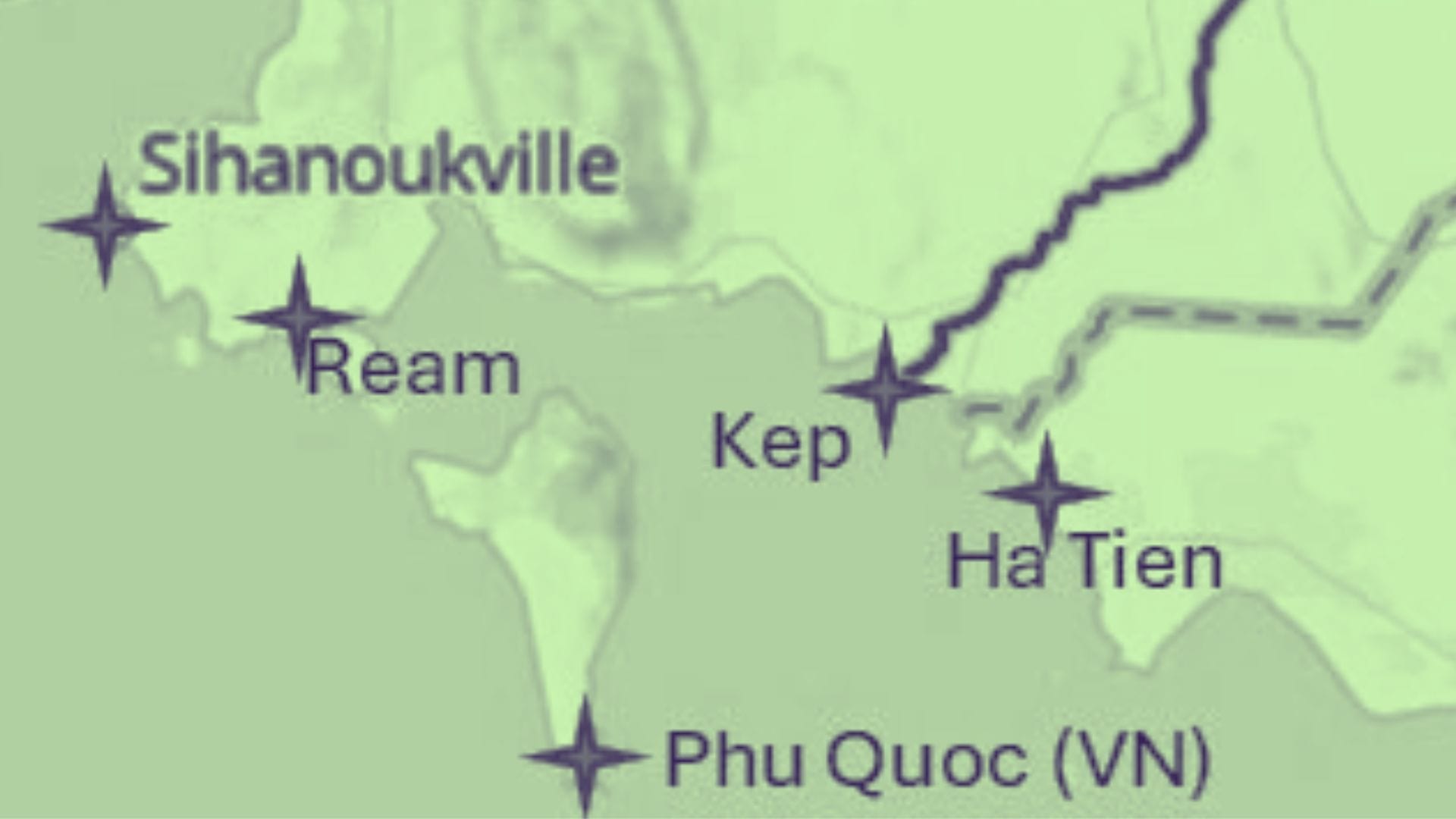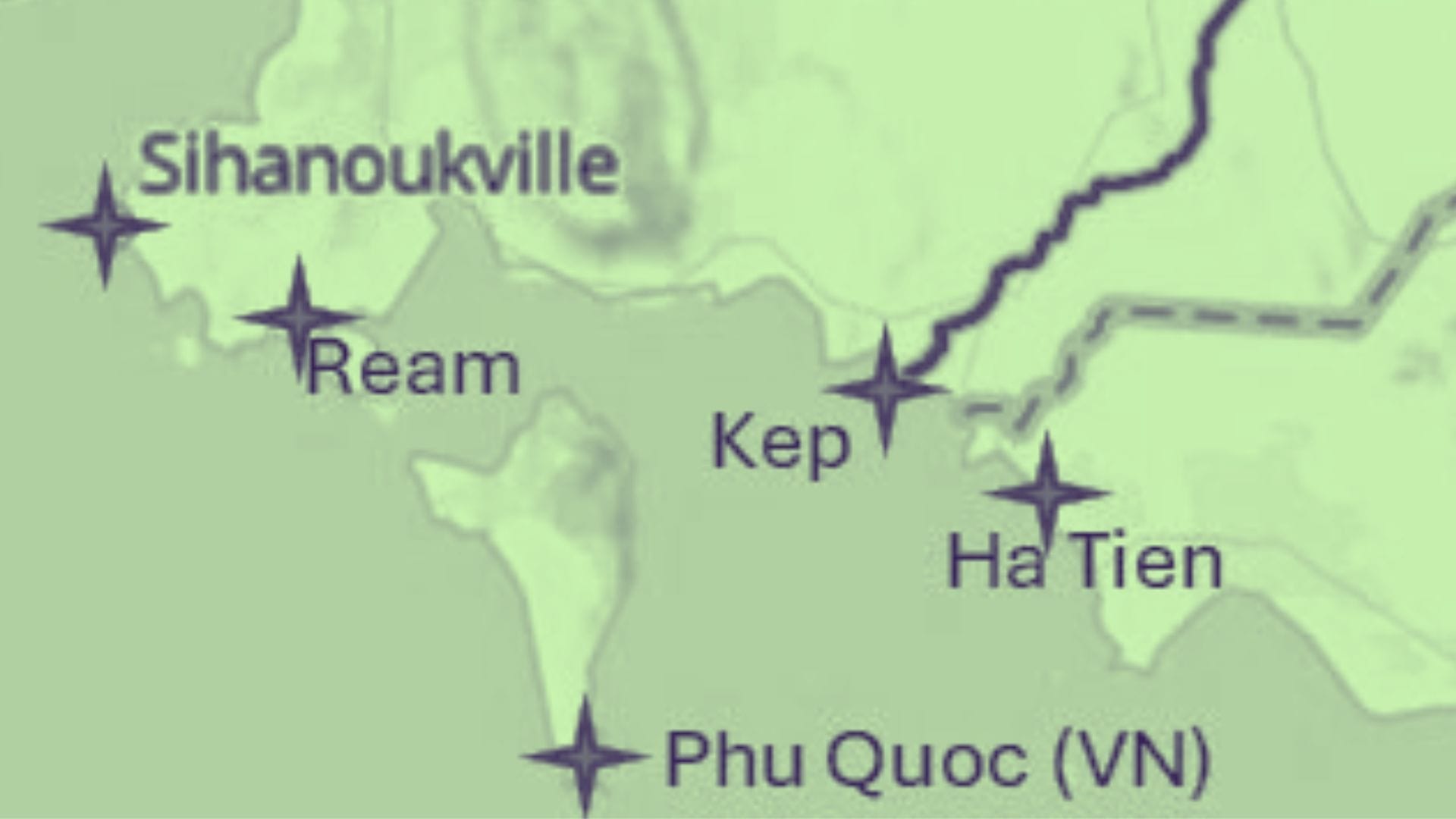
Phạm Văn Luật wrote this article in Vietnamese and published it in Luat Khoa Magazine on November 2, 2024.
On the surface, the Ream naval base on the Gulf of Thailand and Cambodia’s Funan Canal remain separate projects, seemingly unrelated in purpose or design. However, Cambodia’s disclosures to the Mekong River Commission estimate that the canal’s outlet in Kep Province lies just 20 nautical miles away from the naval base. Once both structures are completed, a new military landscape will emerge on the Indochinese Peninsula.
If China were to mobilize both locations fully, this new geography would enable a previously unthinkable scenario. Imagine a fleet, flying the Cambodian flag but backed by China, dispatching from Ream, entering the Funan Canal, and advancing up the Mekong River deep into the Mekong Delta. Việt Nam could lose its western capital, Cần Thơ, in an instant, even as Chinese warships sail on Sài Gòn from their bases in the Spratly Islands.
For now, this scenario may sound like science fiction. Relations between Hà Nội and Phnom Penh remain officially cordial, and former Cambodian Prime Minister—the current Senate President—Hun Sen has denied any military intent behind the canal. However, the strategic possibility is undeniable, creating a cause for concern that cannot be easily dismissed.
China Funds the Construction of the Funan Canal
Cambodia estimates the Funan Canal project will cost $1.7 billion, with China providing 49% of the funding. The project is being built by the state-owned China Road and Bridge Corporation (CRBC), which completed a pre-feasibility study in just a few months, with a planned completion date of 2028. On Aug. 5, 2024—Hun Sen’s birthday—Cambodia also held a groundbreaking ceremony to officially launch the project.
Crucially, the Cambodian Prime Minister has stated that the project is being carried out under a Build-Operate-Transfer (BOT) model and through loans. This means that CRBC, the Chinese firm that funded and built the canal, will likely manage its operations for a period of 20 to 40 years after completion. Control could therefore remain with the Chinese company until 2048 or even 2068, a period during which the Cambodian government would not be able to intervene in the canal’s operation.
The project’s military potential is also significant. While Cambodia’s official notification to the Mekong River Commission stated the canal could handle vessels up to 3,000 DWT, independent experts estimate that its dimensions (180 kilometers long, 80 to 100 meters wide, and 5.4 meters deep) could accommodate ships up to 5,000 DWT during the rainy season. To put that in perspective, Việt Nam’s own Gepard-class frigates have a deadweight tonnage of 2,500 tons, meaning any modern warships with that size could easily navigate this canal.
Ream Naval Base: Another Chinese-Funded Project
Unsurprisingly, China also funded the modernization of Cambodia’s Ream naval base. The extent of its presence became clear in April 2024, when satellite imagery from the Asia Maritime Transparency Initiative revealed that two Chinese warships had been docked at the base for nearly six months.
Cambodia announced on Sept. 4, 2024, that these two ships—1,500-ton Type 056 corvettes—had been officially transferred to its navy, confirming they had been stationed at Ream for months to train local personnel. Their tonnage is well within the Funan Canal’s capacity.
While the canal is framed as an economic project and Ream as a military one, the potential for them to be used in tandem is clear. This aligns with China’s broader strategy under the Belt and Road Initiative, which has seen the gaining access to hundreds of dual-use seaports worldwide—commercial hubs in peacetime that can be pivoted to military use.
With advanced surveillance at Ream—as it has done in the Paracels and Spratlys—China could monitor the entire southern region of the Indochinese Peninsula, including southern Việt Nam. The prospect of Chinese warships sailing into Phnom Penh is no longer far-fetched.
This military infrastructure is being built in a region where historical tensions can be exploited. Resentment among some Cambodian nationalist factions over the so-called “loss of Khmer Krom” (currently the southern Việt Nam) persists to this day, creating a potential political fissure that could be leveraged. This may well be the geopolitical reality of southern Indochina in the near future.
For now, Việt Nam occasionally issues diplomatic protests against China’s actions in the South China Sea. But once the Ream naval base is fully operational, what would stop Beijing from deploying its coast guard there to patrol new waters? This could be the first wave of a new and direct pressure campaign that Việt Nam must confront.

